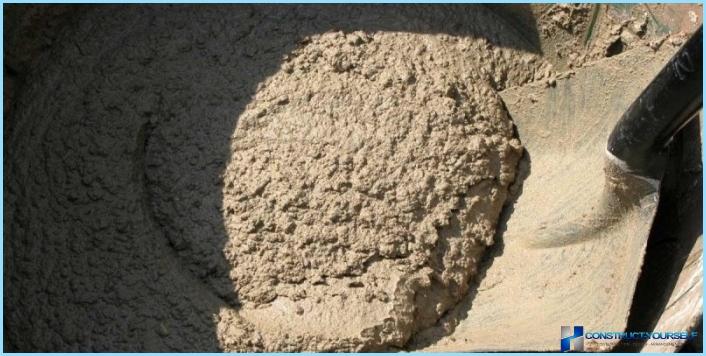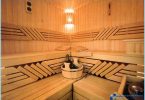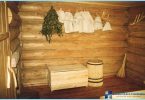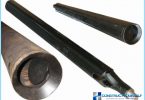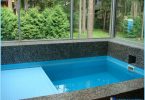The contents
The use of masonry in construction involves mandatory training solution. Its composition and texture depend on many factors: what stage of work it is meant the kind of brick used, climatic conditions and more. After examining the features of preparation of a mix for laying brick, you will protect the walls of the future design from many unpleasant moments.
The types of solutions, their characteristics ↑
A key task for mortar for masonry – to serve a liaison function between elements erected brick structure. The flow rate of the mixture is usually determined per cubic meter of brickwork. An important condition is the quality of used building material, in the presence of a large number of fuzzy faces of the mortar mixes will require more than planned. Basic principles of selection of the solution are as follows:
- in summer and winter formulations have differences;
- underground and above-ground structures require an individual approach in the preparation of the mixture;
- construction with clinker brick involves a special composition of masonry mortar;
- the front walls causes the necessity to take measures that prevent the formation of salt stains;
- construction furnace design eliminates the use of cement mortar.
Binder, part of the solution, determines whether it is a hydraulic or air curing. One binder component indicates a simple mixture, these include lime and cement compositions. Several binding elements to form a complex mixture of masonry, characterized by additional properties. So introduced clay successfully performs the function of the plasticizer, giving the mortar plasticity. Sutures made of such a complex composition, successfully resist cracking during expansion.
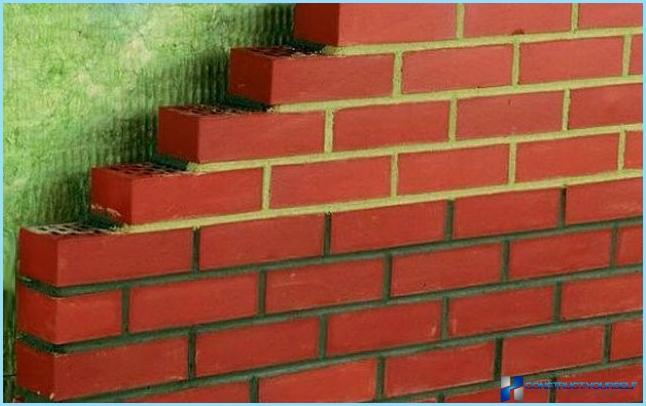
Depending on the initial parameters, used in the construction of the following types of solutions:
- The most commonly used cement mixture. It is characterized by high strength and rigidity. Suitable for private building and for constructing multi-storey structures.
- A step below in strength are cement-clay mixture. Preparation of the composition is preceded by thorough cleaning of the clay from the impurities and grinding.
- Cement-lime mixture is inferior in strength to the previous part. In the course of its preparation the limy dough dilute with water to a liquid state and purified by straining through the sieve construction. The resulting liquid is gradually added to dry cement-sand mixture. Lime plays a role of plasticizer, the resulting composition connect a ceramic or silicate brick.
- The use of lime mortars is limited. In strength they are significantly inferior to the cement composition, therefore, are used exclusively for low structures. Among the advantages of relatively low conductivity.
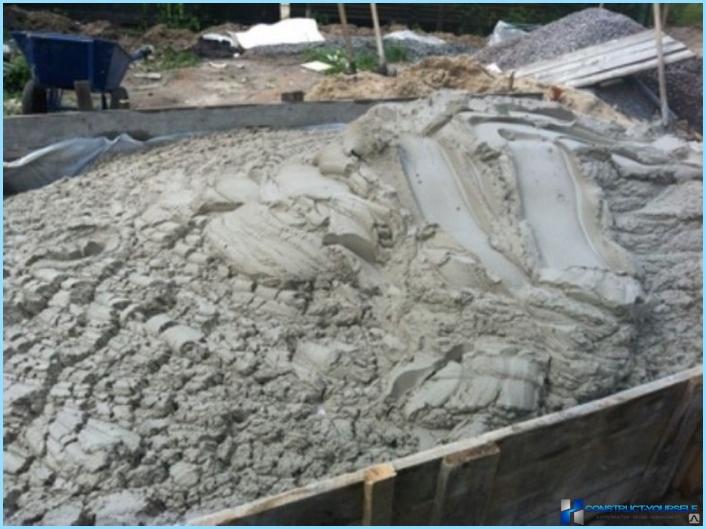
How to cook a good blend ↑
Any workflow requires tools and equipment. For mixing you will need:
- capacity in the form of a trough or boxes with high walls;
- shovel;
- a sieve with cells 3×3 mm and more;
- a minimum of 3 buckets;
- the trowel and jointing tool;
- when large amounts of concrete will not be superfluous.
Compound silicate or ceramic bricks are used in the cement-sand mixture. The role of filler will fit mountain, river or artificial sand, the latter has a low weight.

Initially, the sand and cement are mixed dry, then water flows in small doses, until the desired degree of viscosity. When significant amounts of experts who is regularly engaged in the brick masonry, suggest future components of the mixture to fill the layers in the form of beds, the total height should not exceed 30 cm Formed a ridge a few times mixed with shovels and passed through a sieve.
When it reaches optimum consistency of the mixture a uniform composition is obtained elastic. If the clutch is carried out alone or together, to direct large volumes impractical as the flow moves slowly and freezes the solution quickly. For individual work in enough volume that will be consumed maximum within the next three hours. In laying a single brick, consider a lower consumption of the connecting material.
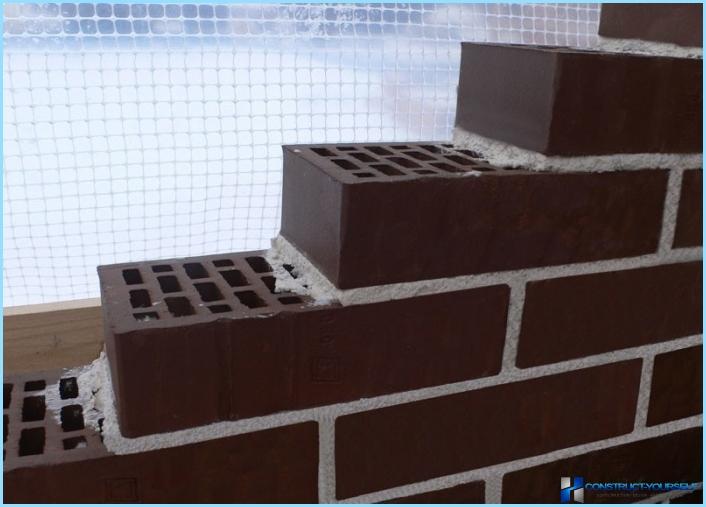
Options proportions ↑
Most often the mix for bricklaying has the following proportions:
- cement – 1 part;
- sand – 3 parts;
- water, 0.5 parts.
These indicators vary depending on the requirements to the composition and types of cement. For example, the masonry of clinker requires a composition of high viscosity, as facing brick has low water absorption. Before starting work it is better to study reference tables for building codes that take into account the following factors:
- the condition of the soil;
- climatic conditions;
- place of laying (underground or aboveground, exterior walls or internal partitions etc.)
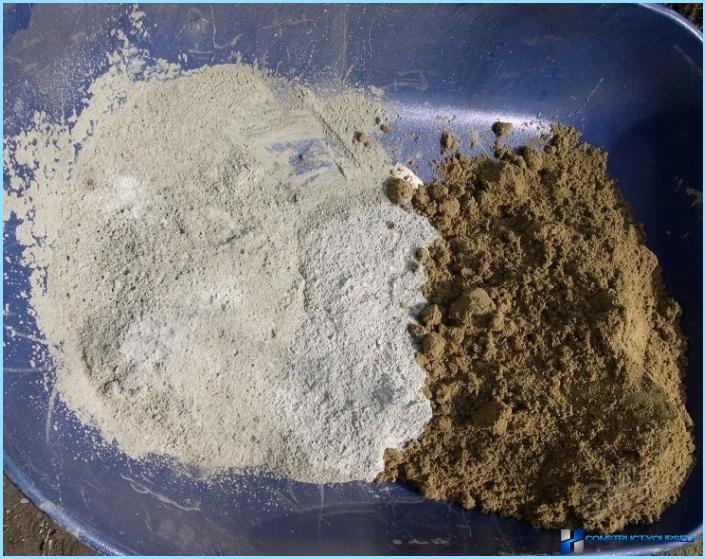
To improve the properties of mix for masonry allow dispersion of the additive in the form of lime and clay. To increase the strength of the composition, lime mortars complement Molotov slag or active silica additives. The following table provides approximate relations between the elements of mix for masonry:
| Brand solution | Recommended brand of cement | The cost of cement, kg | |
| 1 mThree solution | 1 mThree sand | ||
| Fifty | Three hundred | One hundred eighty five | Two hundred twenty five |
| Four hundred | One hundred forty | One hundred seventy five | |
| Seventy five | Three hundred | Two hundred seventy | Three hundred ten |
| Four hundred | Two hundred | Two hundred forty | |
| Five hundred | One hundred sixty | One hundred ninety five | |
| One hundred | Three hundred | Three hundred forty | Three hundred eighty five |
| Four hundred | Two hundred fifty five | Three hundred | |
| Five hundred | Two hundred five | Two hundred forty five | |
| One hundred fifty | Three hundred | Four hundred seventy | Five hundred ten |
| Four hundred | Three hundred fifty | Four hundred | |
| Five hundred | Two hundred eighty | Three hundred thirty | |
To extend the viscosity of the prepared mixture and laying bricks in hot climates will allow the addition of water in small quantities and regular stirring.
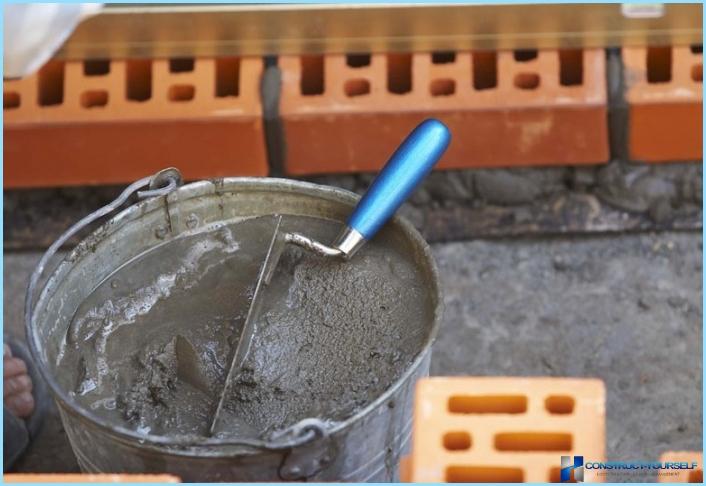
Requirements solution ↑
Quality bricklaying involves the use of an elastic solution, when you have the right ratio of density of liquid. Especially this should be used when laying bricks under the joints. If the mixture «breaks», this indicates the excess of sand. Typical properties of rubber blends – ease of application and distribution on the surface of the brick. The right solution ensures complete filling of the space between the bricks, which further promotes the formation of a quality weld. In the process of laying bricks of the excess mixture acts on all sides. Feature elastic composition – it does not flow, the wall remains clean. Ultimately, the process of bricklaying will be completed faster due to the lack of diversionary procedures for the correction of joints and cleaning of walls.
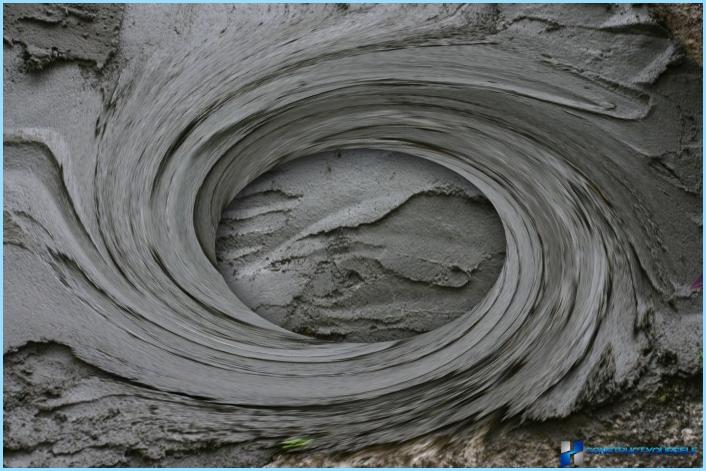
The strength of the solution is determined by the mark applied cement. The number after the letter M indicates the weight of the stand 1 cmTwo mixture. Portland cement 400-500 marking provides maximum reliability and prevents the risk of efflorescence. To get a good blend with the desired elasticity measure components of a future solution defined doses, for this purpose, use containers with a fixed amount or classical scales.
Amongst professional builders there is a separation of the mixture for brick masonry in the following categories:
- Skinny. An excessive amount of filler (sand) provokes frequent breaks. They do not correspond to the optimal strength of brick masonry.
- Normal mixtures are characterized by the proportional composition of the binder component and filler.
- Oily compositions are characterized by excessive presence of binding element, which further leads to cracking of mortar for bricklaying.
To determine the fat content in the lime and clay solutions used an ordinary shovel:
- in the absence of deposition – the composition of lean and requires the addition of binding elements;
- separate adhering clusters indicate the quality of the mixture with the correct elasticity;
- plastered with shovel easy cleanup, says fat solution which must be diluted with filler.
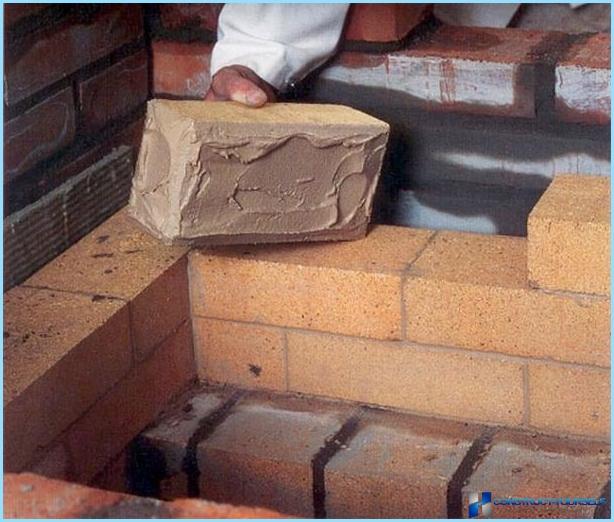
The factors determining the consumption of masonry mortar ↑
The flow rate of the mixture for brick masonry is influenced by the following factors:
- The thickness of the seam between the bricks. Given their length, exceeding even a few millimeters will lead to a significant increase in the volume of solution used.
- Wall thickness.
- Type applied of bricks. Here consumption is increased when laying bricks, so make sure to increase the overall volume of the solution by 20-30%.
To know the flow rate of the mixture averaged data is used, which at 1 mThree brickwork accounts for 25-30% of the volume of the solution. On this basis, to determine the flow rate of the masonry structure it is necessary to know the volume of brickwork. The algorithm allowing to calculate the need for cement includes the following steps:
- Calculated total volume of brickwork. Don’t forget to subtract the area of window and door openings.
- On the basis of information, a 1 mThree laying the proportion of the solution is 0.25-,30 mThree, expect the total volume of the mortar.
- Based on the desired proportion, determine the need for cement.
Properly done the calculations do not allow to break out from the planned schedule of work and to complete the whole process in a timely manner.

